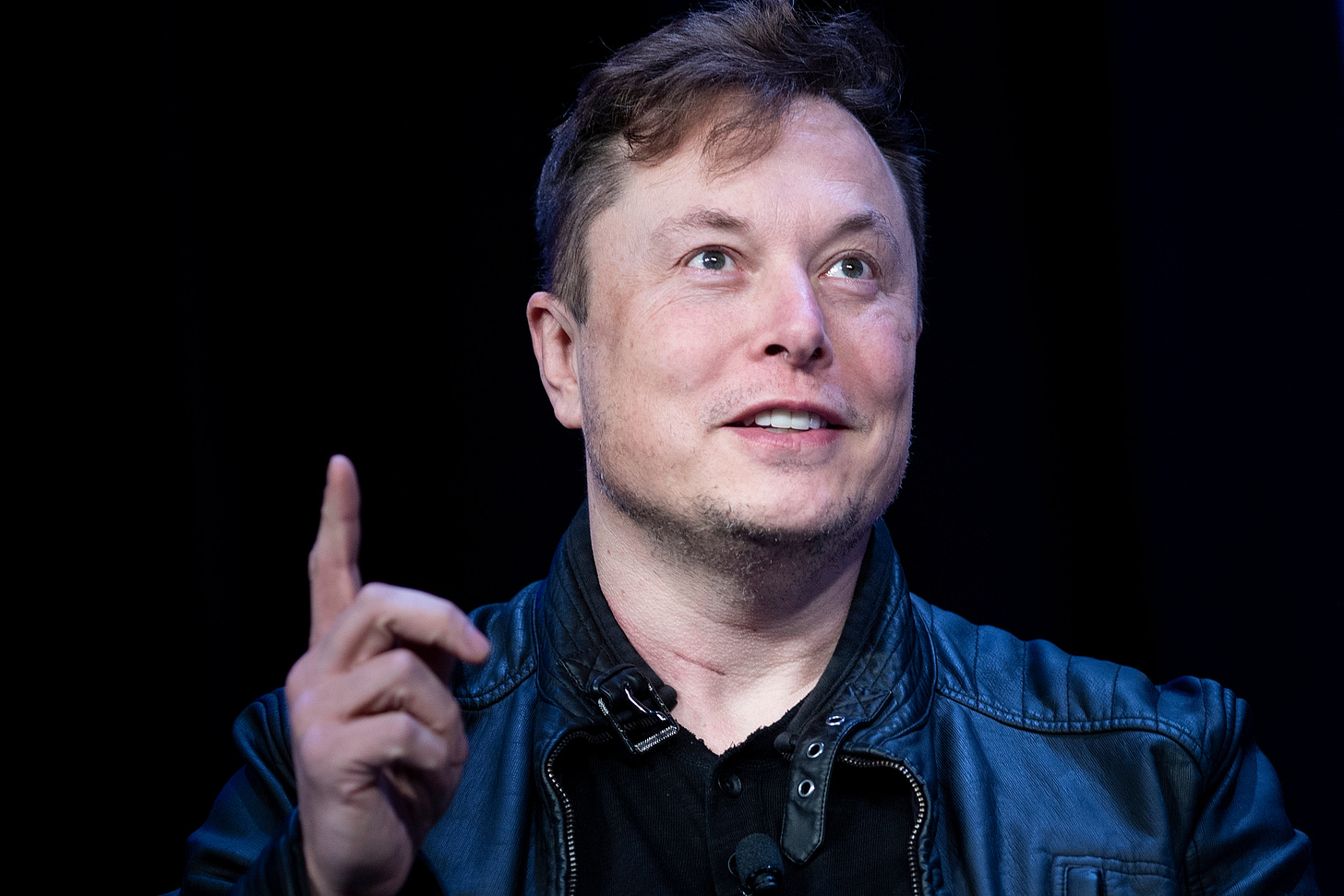Musk Reads: Elon Musk details SpaceX's big Mars city goal

Musk discusses the Mars city, Starlink lifts off, and a new Starship rendering catches Musk’s eye. It’s Musk Reads: SpaceX Edition #211.
A version of this article appeared in the “Musk Reads” newsletter. Sign up for free here.
Musk quote of the week
“The acid test, really, is, if the ships from Earth stop coming from any reason, does Mars die out?”
Read more about Musk’s goals for the Mars city.
SpaceX
Musk wants the Mars city to sustain itself, he explained in an interview at the Mars Society Convention last week. In a livestreamed interview with Robert Zubrin, president of the society and the person credited with persuading Musk to aim for Mars, Musk detailed some of the finer points about his plans for the Starship along with getting a city started on the planet by 2050.
Here are some of the big takeaways:
The “acid test” for any Mars city will be whether it can sustain itself without shipments from Earth. That would enable humanity to continue in the wake of a cataclysmic event. Read more.
Reaching full sustainability requires sending around 1 million people to the planet. One set of people will go through sponsorship; the other set through collecting the funds together.
The Starship was developed in part to meet this goal in a reasonable amount of time. Musk explained that a city would need somewhere around 1 million tons on Mars, and that requires getting around 5 million tons to low-Earth orbit. The total global capacity to orbit of all expendable rockets is around 500 tons.
“I’m 80 to 90 percent that we will reach orbit with Starship next year. I think probably 50 percent confident we’ll be able to bring the ship and the booster back.”
The initial flights with the Super Heavy booster will use two to four engines rather than the planned 28.
SpaceX aims to start high-volume flights in 2022. The company could also have “a shot” at demonstrating refueling in low-Earth orbit that same year. An uncrewed mission could launch for Mars in “maybe four years,” or 2024.
Musk is “not super sure” where the best place to land on Mars is but likely “mid latitudes, probably on the north” and somewhere that’s “close to ice.”
A Starlink on Mars? Musk said you could “totally” do some variant of Starlink, maybe with “a big laser” to provide a link back to Earth.
What’s next for SpaceX: SpaceX is set to launch the 15th batch of Starlink satellites at 12:36 p.m. Eastern time on October 21. The mission is set to lift off from Space Launch Complex 40 at the Cape Canaveral Air Force Station in Florida.
In other SpaceX news…
Liftoff! SpaceX sent up the 14th batch of Starlink satellites at 8:25 a.m. Eastern time on October 18. The mission launched from Space Launch Complex 39A at the Kennedy Space Center in Florida. The launch was the fifth flight for the Falcon 9 booster and the third flight for both halves of the protective fairing. Following the launch, the booster successfully landed on the Of Course I Still Love You drone ship.
An impressive rendering of the Starship caught the attention of Musk this week. Minnesota-based hobby 3D artist Bart Caldwell shared new renderings with Inverse of the Starship SN8, expected to fly to new heights soon. Read more.
Where is Starman? Musk’s red Tesla Roadster has been making its way across the solar system. Read more.
Musk Reads mailroom
John Lepthien writes:
As a former member of the L–5 Society, perhaps it is time that the remaining of members reform the organization and move forward with a permanent space station Any thoughts from any old timers find their way to you? Keep on winning and continued success!
You’re the first! Last week’s Musk Reads letter about putting a space station at the Lagrange point between the Earth and the Moon bore strong similarities to those suggested by the L5 Society. With recent advancements in rocket launches, perhaps societies like these could flourish again?
Irv Drost writes:
Few seem to consider the light intensity on Mars is significantly less then here on earth. Growing plant crops would be quite inefficient under natural sun light. Solar panel efficiency would be less as well.
Growing crops would indeed be a challenge. Musk has suggested before that solar-powered hydroponics could help plants grow in the otherwise harsh conditions. That would protect against one of the biggest pitfalls of growing plants on Mars: dust storms.
Got any comments or queries? Don’t forget to send them over to muskreads@inverse.com.
Photo of the week
Starship kitted out with three Raptor engines. Read more.
Got any photos or videos you’d like to share? Feel free to send them over to muskreads@inverse.com.
The ultra-fine print
This has been Musk Reads: SpaceX Edition #211, the weekly rundown of essential reading about futurist and entrepreneur Elon Musk. I’m Mike Brown, an innovation journalist for Inverse.
Email me directly at mike.brown@inverse.com and follow Inverse on Twitter @inversedotcom. Follow me on Twitter @mikearildbrown.
Got any comments or queries? Don’t forget to send them over to muskreads@inverse.com.
What did you think of today’s stories? Hit reply to this email to let us know. Thanks for reading!
A version of this article appeared in the “Musk Reads” newsletter. Sign up for free here.

